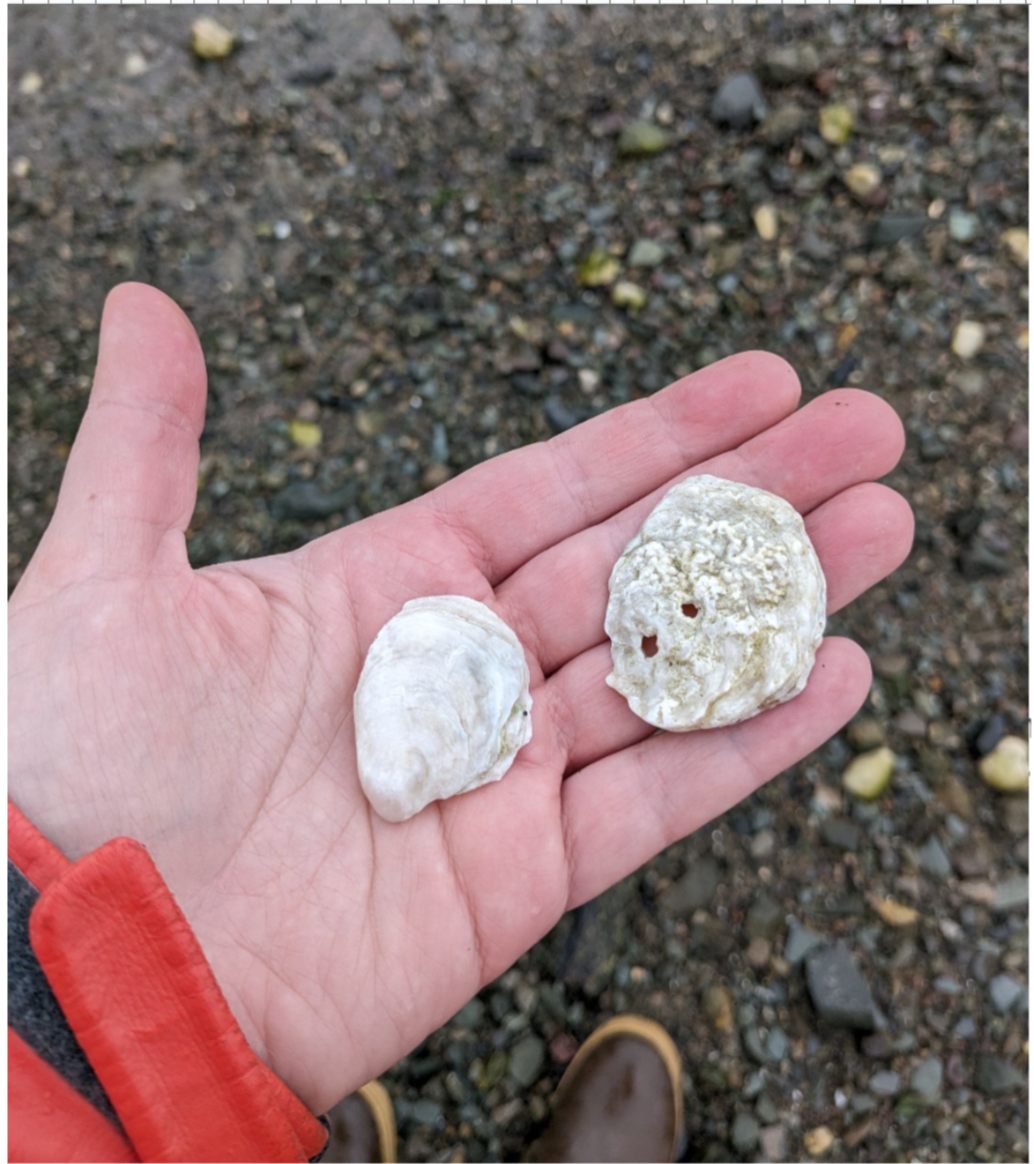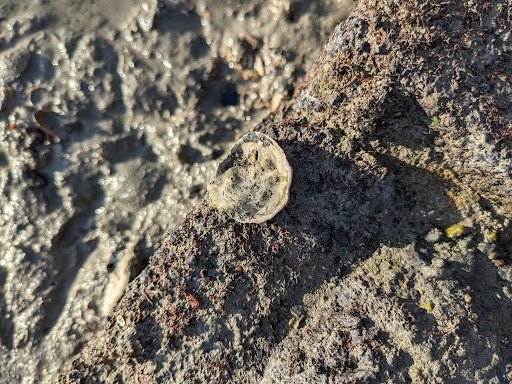iNaturalist GUIDE: OBSERVING Olympia Oysters
iNaturalist is a platform for recording observations of organisms in the natural world, thereby contributing to biodiversity science by providing valuable data on what types of organisms are being found and where.
You can contribute to the Wild Oyster Project’s efforts by making oyster observations on iNaturalist via the website or mobile app.
Sign up today and help us find our Olys! https://www.inaturalist.org/signup
Before you go, be sure to check the tide. Oyster hunting is best done at low tide (below 1 ft). https://tidesandcurrents.noaa.gov/
SEE below for a step-by-step guide:
SO what does a wild Olympia oyster look like?
An oyster is a type of mollusc called a bivalve. It has 2 shells or “valves” that clamp together. It is a sessile organism meaning it never moves, the bottom shell is cemented to the substrate to which it is attached. Usually, oysters attach to other oysters, but you can also find them attached to rocks, seawalls, docks, etc.
As far as oysters go, our native Olympia oyster is a small flat oyster. They rarely grow larger than 2.5 inches (the size of a silver dollar). The upper/right valve is not attached to the substrate and it is mostly flat. Olympia oyster shells are not perfectly symmetrical like clams or mussels. They have will have an uneven shape and a rough edge. There is a lot of natural variation from oyster to oyster and their shells can be a variety of colors, from greys, light purples, yellows and browns.
A living oyster will have 2 shells and be hard to open. When an oyster dies, it opens up, and eventually the top shell will fall off, leaving behind just the bottom shell. You might also see oyster shells washed up on the beach. Observations of living oysters are the most valuable, because they tell us where oysters are currently living and surviving.
It is best to look for oysters at a low tide that is less than +1 foot. Many websites provide information on your local tides, here is the NOAA website for tide info: https://tidesandcurrents.noaa.gov/.










